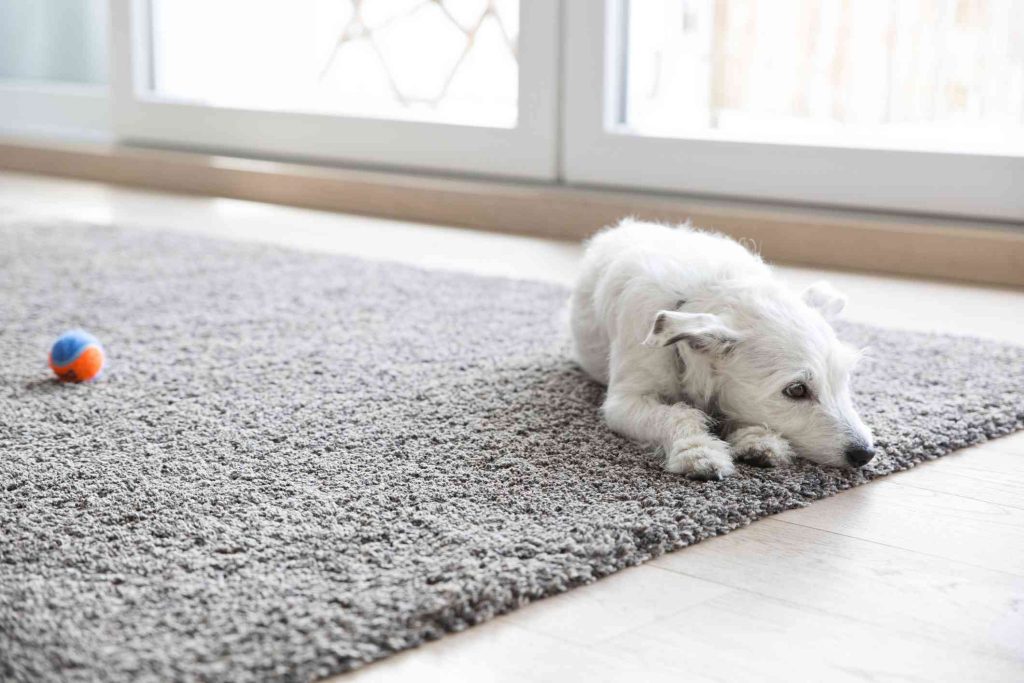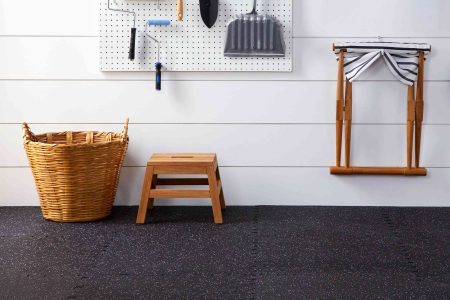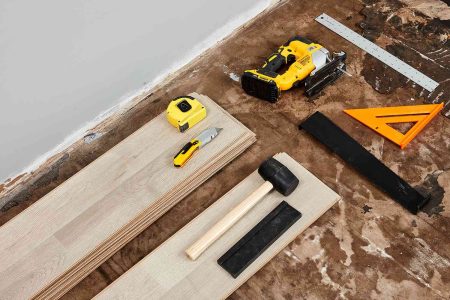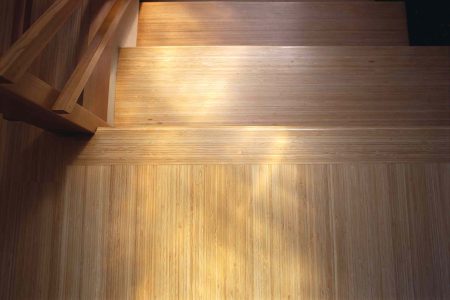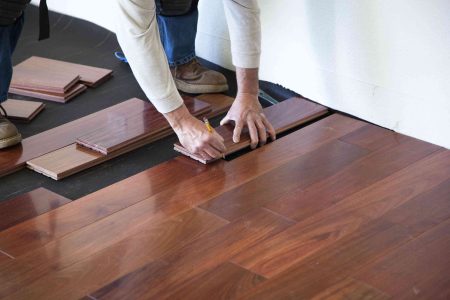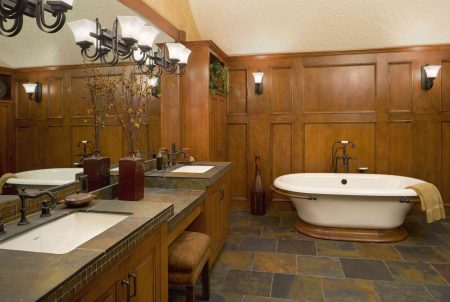Basements spaces are often utility spaces or recreation spaces that receive hard use, so you may not be eager to invest $30 per square foot for marble tile, and may not be excited about laying a new subfloor to install plush carpeting. And you don’t need to.
A basement just requires a good, serviceable flooring material that will stand up to abuse and, above all, moisture. Since basements floors are below ground and usually rest atop a concrete slab, moisture is a primary concern. With all of that in mind, inexpensive flooring choices will have to be those materials that can be installed right on a concrete slab—or the concrete itself might be the flooring.
Concrete
Concrete flooring can be the least expensive choice in a basement because it’s already there. You might be able to give it a good cleaning, maybe grind down some rough spots, and call it good. You can always use throw rugs or carpet tiles (see below) to add warmth and softness to specific areas. If you want a better look to concrete, you can acid-stain it. Acid stains create color in concrete through a chemical process—it is permanent and doesn’t leave a surface film, as paint does.
Painting concrete should not be done in a basement unless proper care is taken to prepare the surface. If adequate steps are not taken, moisture can come up through concrete slabs and soon cause the paint to blister or peel off the surface.
Taking the decorative idea even further, you can have a concrete slab polished (essentially ground smooth) and/or sealed, but that can add significant expense to this otherwise bargain-basement option.
Vinyl
You can’t go wrong with vinyl that’s designed to go directly over concrete. Vinyl is durable, easy to install, and highly moisture-resistant. The best options for both appearance and ease of installation are vinyl planks and sheet vinyl. Both can be “floated” over concrete—meaning they are not glued down but are instead laid on a thin underlayment sheet with bonded seams (sheet vinyl) or interlocking seams (planks).
Prices vary, and while the best products are more expensive, it should be easily possible to find a good mid-grade vinyl in the right style for your decor. Again, make sure the flooring is suitable for use over concrete, and follow the manufacturer’s instructions for prepping the slab and installing the vinyl.
Ceramic Tile
Tile is a slam-dunk in basements, due to its unmatched durability and moisture resistance. It can withstand floods and all manners of abuse. And it can go directly over concrete in many cases. Since you’re looking at cheap basement flooring options, your choices largely will be limited to glazed ceramic tile, but you might also find some porcelain tile that fits your budget.
The biggest expense for a tile floor isn’t the material, but the labor. So tile is not a cheap flooring option unless you are doing the work yourself. Fortunately, tiling a basement floor isn’t much different from any other floor in the house. If the basement slab has large cracks (especially cracks that move), it’s a good idea to install an uncoupling membrane under the tile. This adds a bit to the cost, but it isn’t difficult to install, and the membrane helps prevent slab shifting from breaking up the tile.
Carpet Tiles
Carpet tiles for basements need not be the hideous glue-down tiles found in office buildings. Very stylish modular carpet tiles are perfect for basements. Carpet tiles have a moisture-resistant plastic backing and can be run under water for cleaning, so they can easily handle occasional basement moisture. And if you have significant flooding in your basement, you can simply remove the tiles and move them to safety until the crisis is over.
Carpet tiles are simply laid on the concrete, or they can adhere with sticky patches applied to the bottom of the carpet backing. You can mix and match colors and patterns for any number of custom designs, and carpet tiles also make great area rugs of any size.
Laminate
No discussion on inexpensive flooring is complete without some mention of laminate. Bear in mind that laminate flooring itself is not moisture-resistant (far from it), but it can be installed over a moisture barrier in addition to a moisture-resistant foam underlayment to help protect it from moisture in the concrete slab below. Learn more about vinyl flooring option that is moisture resistant.
- Tip: Another option is to lay a floating subfloor on the concrete first, then install laminate over it. Flooring subfloor panels consist of a plastic honeycombed bottom that raises the subfloor slightly off the slab, covered with an engineered plywood or wafer board surface. The edges of the subfloor panels interlock and provide a perfectly flat subfloor on which to lay laminate planks (or carpet, for that matter). While this adds a bit to the overall cost of the floor, it does largely eliminate problems with slab moisture.
Installed as a “floating floor,” laminate makes for a pretty easy DIY project, and the foam underlayment and the flooring itself provide a reasonable barrier to the coldness of the concrete. But one caveat about all laminate is durability. Its tough factory finish is highly resistant to scuffs, stains, and heavy foot traffic, but its seams are a weak spot. One overwatered plant or one pet accident that is not quickly cleaned up can easily lead to raised and bubbled edges, which are then prone to chipping away. But if you want a cheap wood-like floor in your basement, you can’t beat laminate.
Read the full article here



